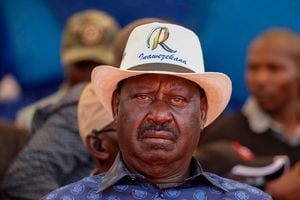Constitutional provisions without implementation formula is an exercise in futility

The 2010 Constitution earned acclamation largely due to the progressive provisions it makes including the Bill of Rights that tackles human rights, equality and freedoms, which are integral to democratic practice.
What you need to know:
- Among the issues canvassed in the 2010 Constitution are human rights, equality and freedoms, which are integral to democratic practice.
- When Chief Justice David Maraga issued an advisory to President Uhuru Kenyatta to dissolve Parliament for failing to implement the two-thirds gender rule, he was acting to give force to Article 27 (8).
- The novelty of having equitable gender representation legislative assemblies is difficult to argue with - how did the framers of the law contemplate actualising such provisions?
- Are there avenues for revisiting the matter and finding a practical settlement?
The 2010 Constitution earned acclamation largely due to the progressive provisions it makes on reconfiguring governance, protecting civil liberties and promoting accountability. Ingrained in it are the principles of dispersal of powers from the centre and sharing them across multiple other agencies.
The Bill of Rights that is contained in Chapter Four, is fairly extensive and representative. Among the issues canvassed are human rights, equality and freedoms, which are integral to democratic practice.
Gender equality is core to these rights.
When Chief Justice David Maraga issued an advisory to President Uhuru Kenyatta to dissolve Parliament for failing to implement the two-thirds gender rule, he was acting to give force to Article 27 (8) that expressly commits the government, national institutions and counties to attain equitable gender representation at every level.
Appointive bodies
The Article states as follows: “... the State shall take legislative and other measures to implement the principle that not more than two-thirds of the members of elective or appointive bodies shall be of the same gender.”
Opinion is deeply divided but there is reason for the decision; Justice Maraga acted on clear constitutional provisions. The novelty of having equitable gender representation legislative assemblies is difficult to argue with. However, the challenge lies in implementation and that gives rise to the question; how did the framers of the law contemplate actualising such provisions? Are there avenues for revisiting the matter and finding a practical settlement?
Article 261 (7), which Justice Maraga invoked, directs the CJ to act in singular way; advise the President to dissolve Parliament if it fails to enact applicable laws for realising the objectives of the Constitution. Conversely, the President is duty bound to do so. It is restrictive; pronounced using the imperative modal, “shall”.
Electoral process
So, whereas the country did the right thing to set high threshold for promoting gender equality as elaborated in the Bill of Rights, nobody thought about ways and means of actualising such rights. Further, nobody thought about the context in which politics is played and the practical dynamics in society steeped in tradition and patriarchy.
For a start, the electoral process is nasty and brutish. The process starts with party nominations and engenders voter mobilisation, financing, campaigning, polling and vote counting. These are not child’s play; they are ruthless, violent and vicious. The organisation and logistics involved are energy-sapping.
Parties are largely owned by men and these are the entities that determine who is nominated to vie for any seat. In many parts of the country, securing ticket of particularly parties is automatic entry to the House or County Assembly. In view of that, fight for party nominations are hard and cruel. Second, voter mobilisation and campaigning is incredibly expensive, murky and chaotic. All these work against women.
Gender requirements
At the institutional level, parties have the remit to observe gender rule, but they hardly do that. Yet, even if they defy the rules, which often is the case, they are never penalised. The Independent Electoral and Boundaries Commission (IEBC) is obligated to enforce the gender rule by ascertaining the trends of party nomination and insisting the parties abide by the gender requirements. In fact, there is no penalty for not observing the rule.
Statistics about party nomination elaborates the point. During the 2017 elections, there were 77 registered parties that participated in the polls. Out of all of them, only six nominated more than 10 candidates. Overall, there were 14,501 candidates and out of whom there were 1,259 women, representing 8.7 per cent. When elections were finally held, 1,863 individuals won seats at the various levels, but only 172 were women.
Now, this is what should be resolved – how to get the number right. What should be done to attain the one-third gender requirement?
One-third gender rule
Several proposals have been made, including having some constituencies delineated for women. But they have been shot down in the floor of the House, which is male-dominated.
At the county level, the Constitution at Article 177 resolved the dilemma by providing for nomination of more women on proportional ratio until the one-third gender rule is achieved. This has ensured that the County Assemblies meet the threshold, which is not to argue that there is fairness because without that provision, women would be as disadvantaged as it is in Parliament.
To be sure, there are 747 women MCAs across the country, but only 96 are elected, constituting a paltry 13 per cent. The rest, 650 or 87 per cent, are nominated. It boils down to the fact that elective politics is unfairly organised and locks out a critical section of society. This takes us back to the original problem, creating a constitutional provision without clarifying how it can be implemented. Perhaps, this is one of the questions that should be debated within the Building Bridges Initiative (BBI) and a resolution made to avoid the back-and-forth debate that seems to take us nowhere.





